he following summary consolidates all movement and classification types covered in this post, offering a visual map of the asset structure framework.

Asset Movement Typologies (4 Quadrants, 8 Types)
[1] Self-Contained Stock Changes (Single-Entity × Stock)
(1) Single-Entity Co-Generation & Co-Extinction
[2] Inter-Entity Stock Transfers (Inter-Entity × Stock)
(2) Involuntary Transfer (Unilateral / Without Intent)
(3) Voluntary Transfer (Unilateral / With Intent)
(4) Mutual Exchange (Bilateral)
[3] Self-Contained Flow Cycles (Single-Entity × Flow)
(5) Consumption Flow
(6) Operational Flow
[4] Inter-Entity Flow Cycles (Inter-Entity × Flow)
(7) Lending Flow
(8) Investment Flow
[1] Self-Contained Stock Changes(Single-Entity × Stock)
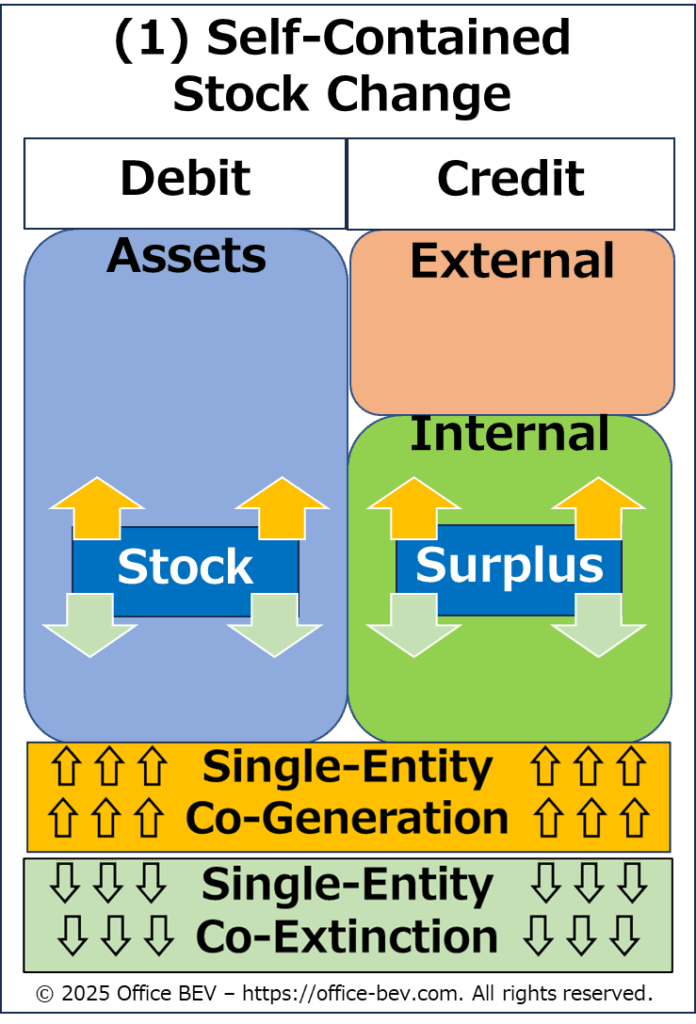
[2] Inter-Entity Stock Transfers (Inter-Entity × Stock)
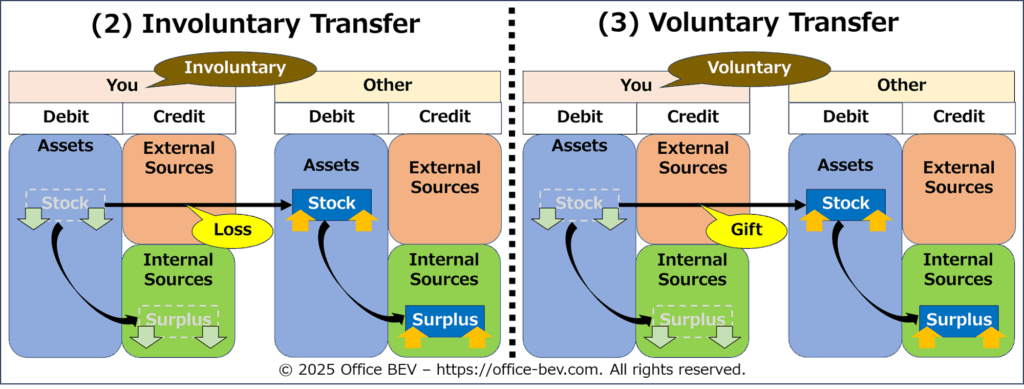
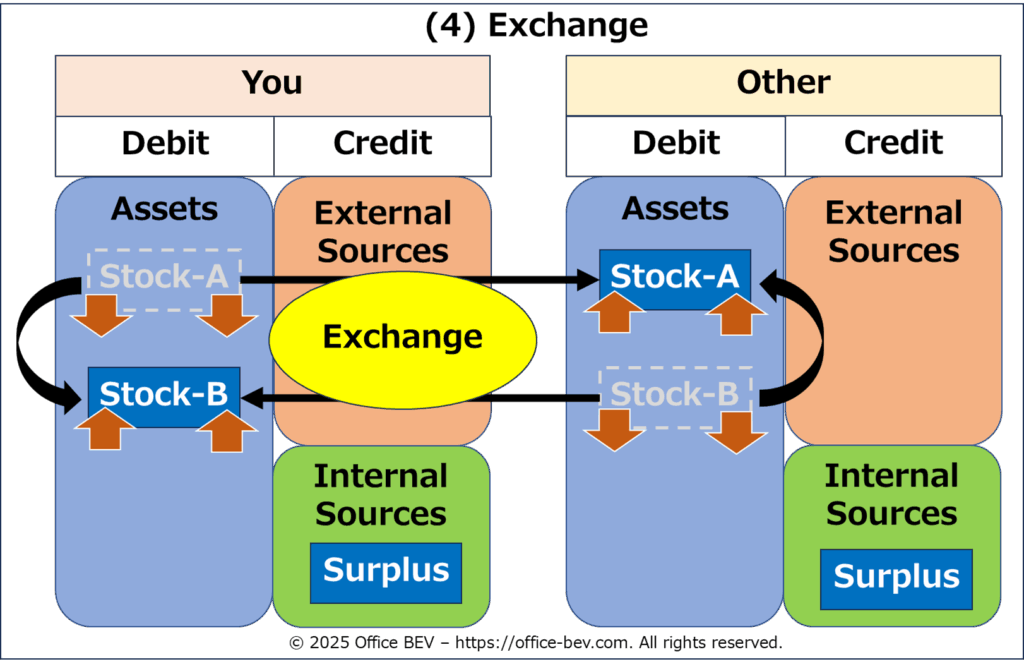
[3] Self-Contained Flow Cycles (Single-Entity × Flow)
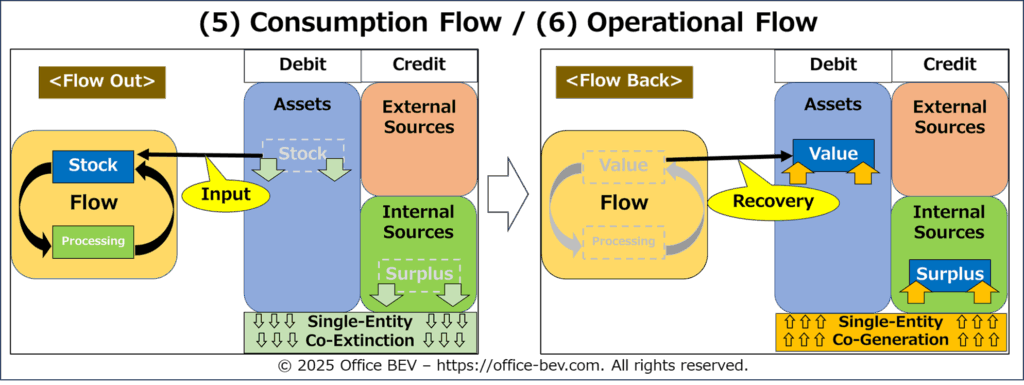
[4] Inter-Entity Flow Cycles (Inter-Entity × Flow)
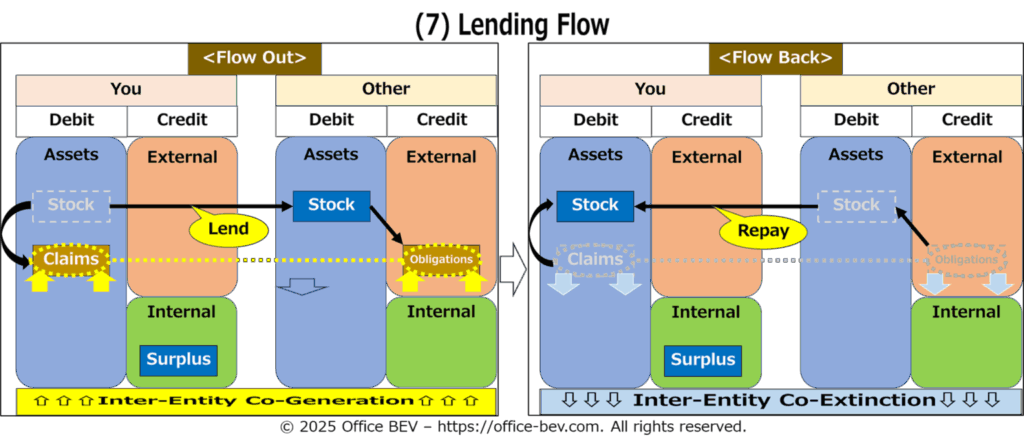

<Asset Typologies(6 Types)>
[Debit Side: Asset Status]
• Absolute Assets — Stock-based, no external relation
• Relational Assets — Claims from lending, with repayment duty
• Investment Assets — Claims from investing, return-based
[Credit Side: Asset Sources]
• Relational Liabilities — Obligations from borrowing / External Sources
• Relational Capital — Obligations from investment, return-based / Internal Sources
• Absolute Capital — Stock-based, internally generated or converted from claims / Internal Sources
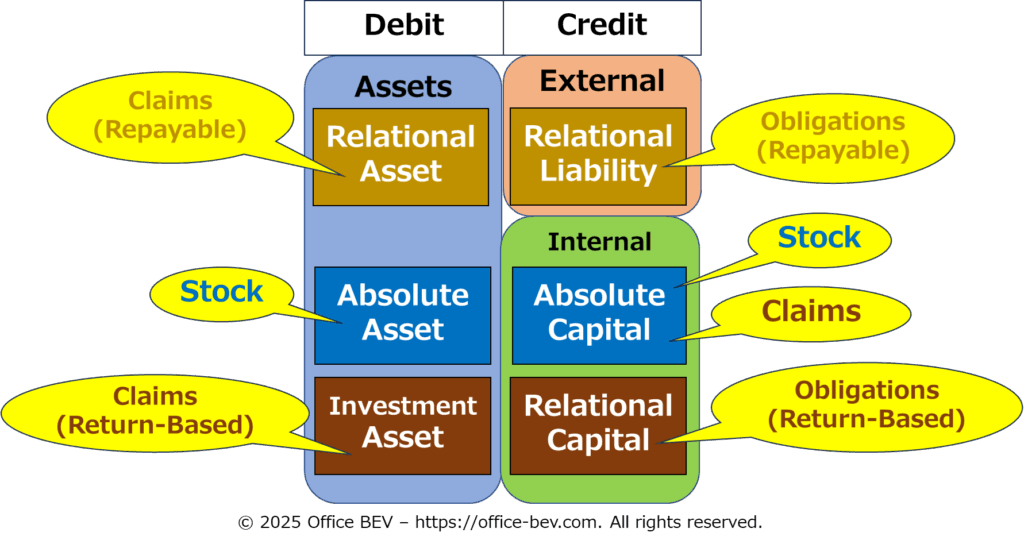
[Central BS connected to other entities via flow structures]
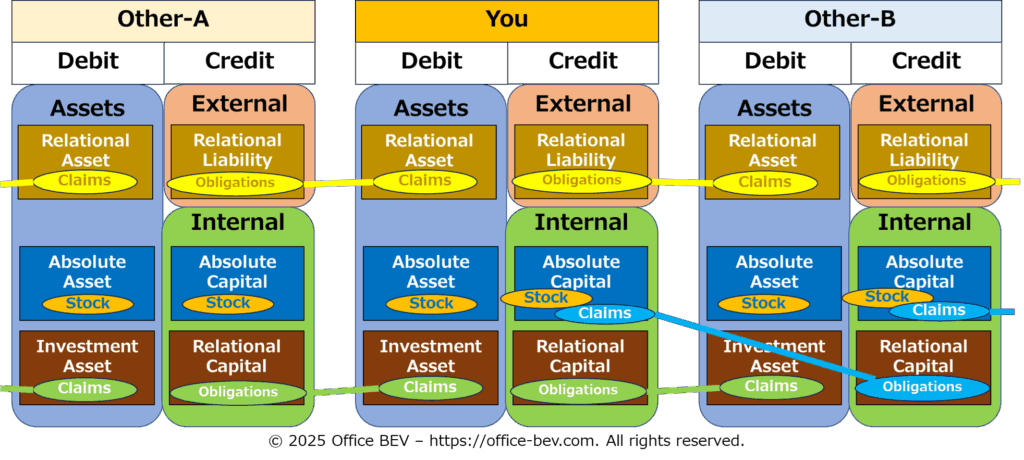
See: Structural Analysis (2) — The Structure of Assets for details.